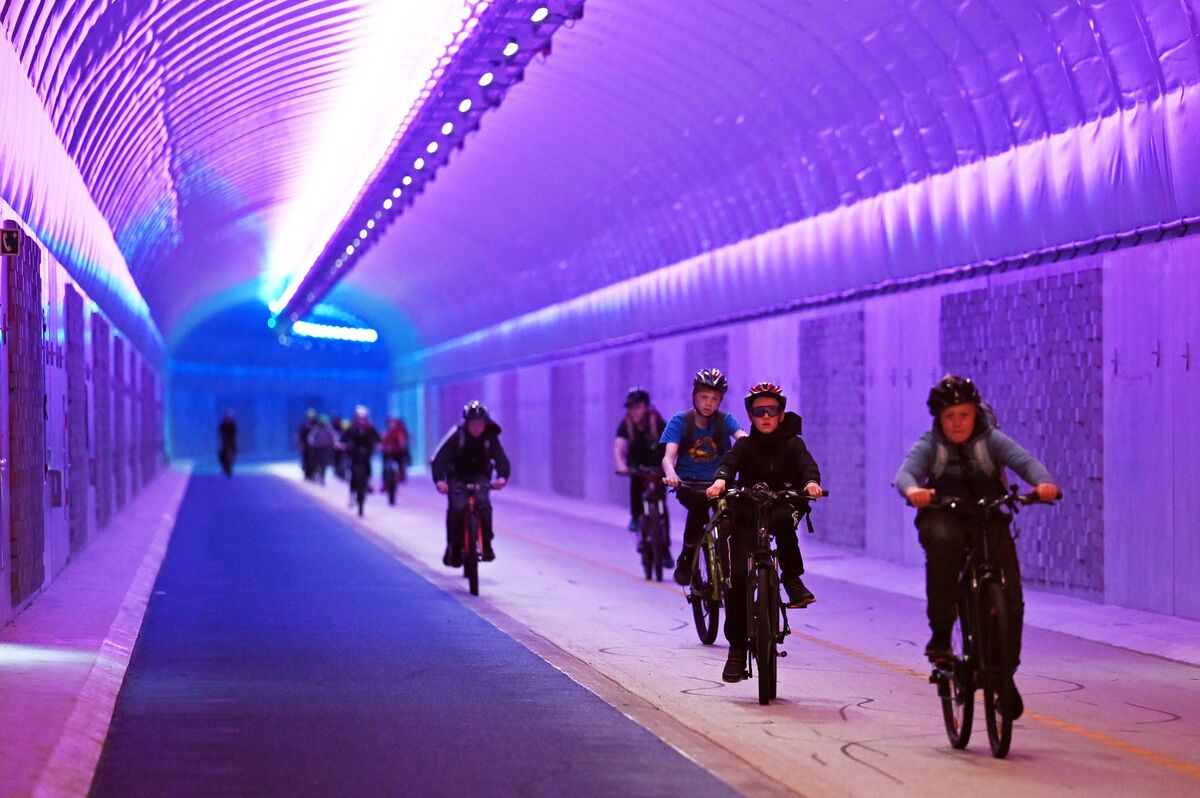Norway’s Fyllingsdalen tunnel is a showstopping piece of urban cycling infrastructure — for a city where car-centric development still dominates.
…
Bergen’s most recent attraction is a unique one: In April, the city of around 270,000 opened the Fyllingsdalen tunnel, a three-kilometer bike-pedestrian pathway that was bored through a mountain. Local officials proudly declared Fyllingsdalen tunnel to be “the world’s longest purpose-built cycling tunnel.” (The Snoqualmie tunnel in Washington State is lengthier, but it used to be rail line.)
Fyllingsdalen tunnel is about as photogenic as an urban bike path can get. Inside, it offers art installations and creative lighting; at its exit, there are stunning mountain views. CNN and Smithsonian have lavished it with international attention, and visiting cycling advocates like the Netherlands-based authors Melissa and Chris Bruntlett have swooned.
Last month I hopped on a bike to traverse the tunnel for myself, and I can confirm that it is an ingenious piece of healthy, climate-friendly infrastructure; I have never seen anything remotely like it. The tunnel is also practical, providing a car-free connection between Bergen’s bustling city center and a fast-growing neighborhood on the other side of the mountain.
But — there is a big “but.” As awe-inspiring as Fyllingsdalen tunnel is, it is still only a Band-Aid fix for Bergen’s decades of car-oriented development. The tunnel reflects the city’s current efforts to shift local trips away from cars, but that goal clashes with a national government whose transportation policies still revolve around the automobile. In such an environment, even the most spectacular bike path can only do so much


